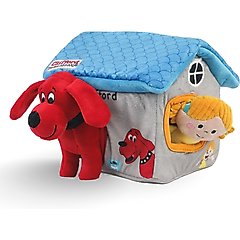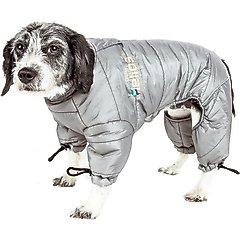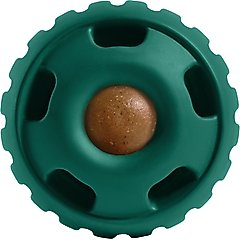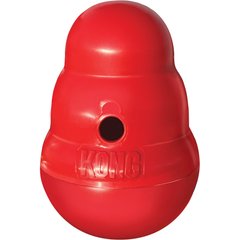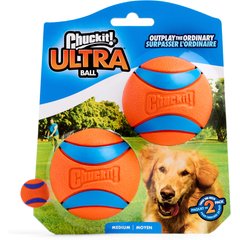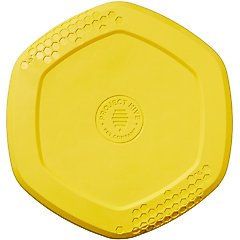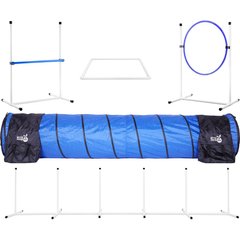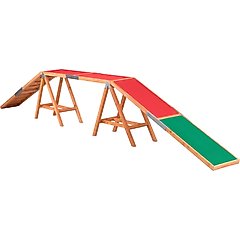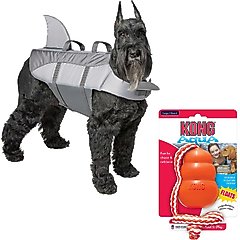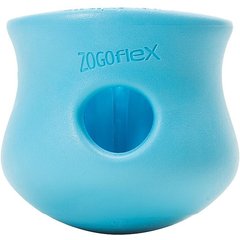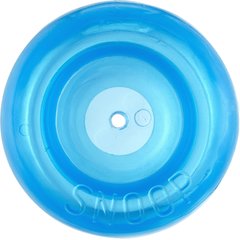How Much Exercise Does a Dog Need? What To Know for Your Pup
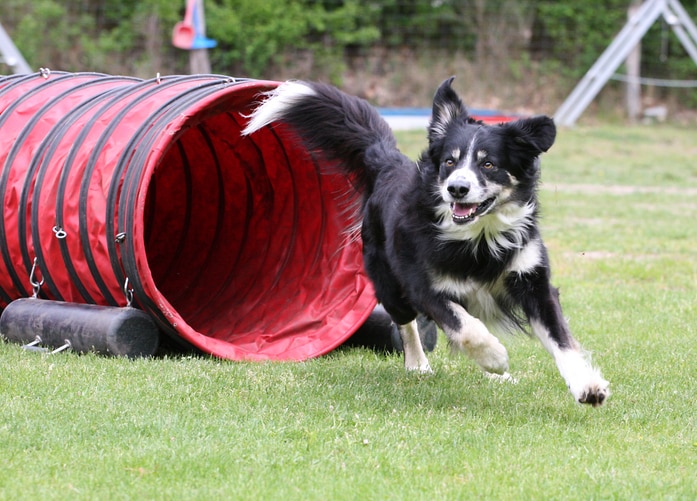
Photo by happyborder/E+
You walk your dog three times a day, so why do they sometimes stand by the door giving you puppy eyes, begging for an extra stroll (or two)? You might be wondering, “How much exercise does a dog need? Am I giving them enough?”
To find out, we asked veterinary experts how much activity your pup needs and the best tips for keeping them in shape.
Key Takeaways
- Exercise needs vary by dog, and their breed, age, health, and personality all come into play.
- Small or low-energy breeds might only need 30 minutes of exercise a day, while other pups could sometimes require two hours or more.
- Your dog needs variety to stay engaged. Fetch is great, but give them options like agility training, scent work, and interactive toys.
- If your dog doesn’t get enough exercise, it can have a negative effect on their health. Signs may include weight gain, restlessness, and excessive chewing.
6 Things That Affect Your Pup’s Exercise Routine
There’s no universal formula for how much exercise a dog needs. You might have a canine athlete or a couch potato, but even couch potatoes need to move around.
There are several factors that will determine just how much exercise your dog needs, says Liz Stelow, DVM, DACVB, a behavior clinician at UC Davis School of Veterinary Medicine in Davis, California.
Health
Both chronic or temporary health issues can limit the type and amount of exercise your dog engages in.
Dogs with arthritis or hip dysplasia, for example, might not be able to do high-impact activities like running or jumping that stress the joints, especially on hard surfaces like concrete or asphalt.
The same goes for dogs with intervertebral disc disease (IVDD), or even those at high risk for it, like Dachshunds and French Bulldogs. Dogs recovering from surgery, an illness, an injury, or dental procedures might have short-term exercise restrictions too.
Obesity can also affect how much exercise your dog can handle, and you may have to introduce new routines slowly. Always refer to your vet for advice.
Lastly, brachycephalic dogs can have health issues due to the shape of their faces. While adorably smooshy, the shape can affect their breathing.
“They also can overheat very easily, so their exercise capacity may be really limited in warmer or humid conditions,” says Amanda Modes, DVM, a veterinarian at VetMind in New Jersey and an American College of Veterinary Behaviorists resident.
Personality
Just like some people love CrossFit (and won’t stop talking about it) while others are yogis, dogs also have preferences.
Your pup may be motivated by fetch but hate long strolls (or vice versa), and they may prefer something more intense or less intense than other dogs.
Breed
Some dog types were bred to be in constant motion—we’re looking at you, Border Collies.
More low-key dogs, like the Mastiff, for example, need less exercise. Note that the size of your pup doesn’t always equate to how much energy they have to expend, and dogs bred to be companions will likely need less exercise than canines bred as “working” dogs.
If you’re curious how active your pup wants to be, refer to a breed guide to help guide you, but keep in mind other factors for consideration.
Age
If you’ve ever had a bouncy puppy or a mellow senior dog, you know that age counts.
“In general, puppies engage in lots of exercise bursts, usually in the form of play,” says Dr. Stelow, noting that they don’t do well with sustained exercise, like a long hike or run.
“Similarly, older dogs may need to burn off energy through short exercise bursts, but they may need it to be walking through knee-deep water versus running through a field,” she adds.
A puppy’s growing bones can also be at greater risk for joint or skeletal problems if the wrong type of exercise is introduced too early, especially in large breeds, like German Shepherds, Rottweilers, and Great Danes. “It’s best to provide shorter, more frequent exercise opportunities where the puppy can set the pace with what they are comfortable with,” says Dr. Modes.
She suggests controlled walks, low-impact play sessions, opportunities for exploration (puzzle toys are great for this), and the cutest puppy exercise of all: zoomies.
Recommended Products
Weather
Experts agree that it’s OK to occasionally skip outdoor exercise because of extreme heat, cold, rain, or snow. (Your dog will still need a quick jaunt outside to pee in weather-appropriate gear like a dog rain jacket or an insulated dog coat, or use pee pads indoors.)
Recommended Products
And, that being said, you can still give your dog a brain buzz and a release of energy with interactive indoor games or toys.
Recommended Products
“Honestly, five minutes with a flirt pole replaces the exercise in the average 20–minute walk. It just might not be as novel or enriching,” says Dr. Stelow.
Recommended Products
Daily Routine
Is your dog a busybody who spends the day romping around with a canine sibling? If so, your pet might not need as much structured exercise.
But if your dog spends most of the day waiting on the couch for you to come home, they’ll need more structured exercise sessions, Dr. Modes says.
How Much Exercise Does Your Dog Really Need?
Here are some general guidelines, but as always, consult with your vet for your own dog.
Note that this doesn’t include running out into the yard for quick bathroom breaks, and if you don’t have a yard, your pup might need more frequent walks.
20 to 30 Minutes
Tiny dog breeds, like Chihuahuas, Shih Tzu, and other lapdogs—like the Cavalier King Charles Spaniel—are often content with a leisurely stroll or two or a game of fetch.
But there are exceptions: The small Cairn Terrier is a sporty pup.
And Dr. Stelow says that some larger breeds like Great Pyrenees and Greyhounds don’t need hours of exercise a day (although most Greyhounds do adore running, even if it’s not for long).
This time frame is usually a good fit for senior dogs and those with health conditions or mobility issues as well.
One Hour
An hour of daily exercise—think two long walks or a short morning jog with some fetch later on—is usually about right for moderate-energy dog breeds.
Recommended Products
Dr. Stelow says this group includes most retriever breeds, like a Golden Retriever or Labrador Retriever, large hounds, Nordic breeds, and larger spaniels, such as a Brittany Spaniel.
More Than an Hour
If you want an avid running partner or a long-distance hiker, a Siberian Husky, Border Collie, Australian Shepherd, or Belgian Malinois might be your ideal active companion.
“Working, sporting, and herding breed dogs [typically] require higher intensity or longer duration, sometimes up to two or three hours of exercise per day,” says Dr. Modes.
5 Fun Exercise Ideas for Your Dog
Walks are great, but “not all physical enrichment has to be a cardiovascular workout,” says Dr. Modes.
Here are ways to invigorate your dog’s exercise routine beyond fetch and walks.
Agility Training
Large and small dogs can participate in casual agility training, which is kind of like an obstacle course for dogs. You can also set up a course in your backyard.
Recommended Products
Scent Work
“Sniffing is a proven stress-reducing activity for dogs,” says Dr. Modes. Take your dog on a “sniffari”—a leashed walk where your pup can sniff and interact with the environment on their terms.
If your dog really seems to enjoy scent work, look for classes or training near you.
You can also set up scavenger hunts indoors—or play hide-and-seek with dog treats (in moderation, of course).
Recommended Products
Jogging or Running
Lace up your sneakers and bring along your four-legged friend for your next run. Ask your vet first, since some breeds—such as brachycephalic dogs—are not a good fit for this activity.
Swimming
Swimming is a great, low-impact form of exercise. However, never force your dog into the water; let them make the first move.
Make sure beach conditions are safe (it’s usually best to avoid ponds and lakes that often grow blue-green algae that is toxic to dogs), and keep your pup in a life jacket.
Recommended Products
Interactive Toys
“Many dogs do great with activities that combine movement with mental stimulation,” says Dr. Modes. She suggests food puzzles that require motion, like those that roll and wobble.
Recommended Products
How To Know If Your Dog Isn’t Getting Enough Exercise
Your dog’s body condition, activity level, and behavior may all hint at needing more exercise. Here are the most common signs to look for:
- Excessive chewing
- Weight gain
- Excessive barking
- Attention-seeking behavior (such as mouthing or rough play)
- Restlessness and pacing
- Leash pulling
If you observe these signs, see a vet. Dr. Stelow says medical causes should be ruled out before assuming lack of exercise is the issue.
FAQs About Dog Exercise
What are the benefits of exercise for dogs?
“Exercise can help dogs maintain a healthy weight, promote optimal cardiovascular health, strengthen bones, joints, and muscles, and even boost the immune system,” Dr. Modes says. It also boosts their mental health.
Is it OK to not walk your dog every day?
Not really. If the weather’s fine and your dog’s in good health, walks are usually a good idea. Ask your vet about your particular pup.
Do dogs need walks if they have a yard?
A secure, fenced yard is a great opportunity for your dog to run a little wild and stretch their legs, but they can still benefit from regular walks to engage with different sights and smells.
Is four walks a day for a dog normal?
For some dogs—like those without access to a yard for potty breaks—four walks a day might be normal, while other dogs may not need as many outings. Ask your vet.

